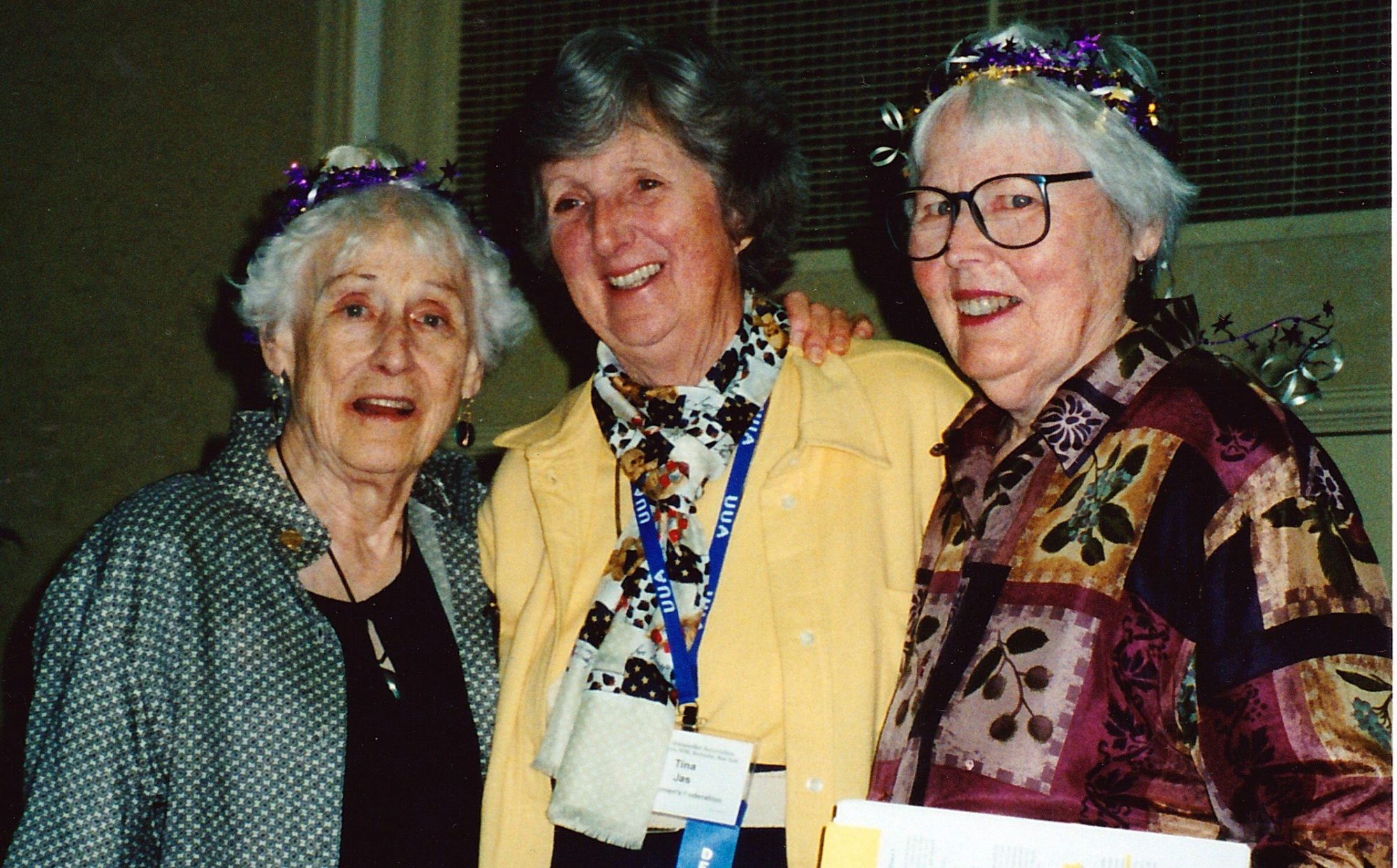From PCD Newsletter 1983 by Lucile Schick Longview from her District presentation
The Women and Religion Resolution
Many of us have chosen to work for change within our own religious community by pressuring for irnplementation of the Women and Religion Resolution. We found, however, that the leadership which eontrols the interpretation and the implernentation of resolutions was misinterpreting the resolution by:&. Ignoring three previous resolutions that centered on obtaining equal opportunity for women within the denominational hierarchy, and in their place, claiming that the Women and Religion Resolution was about that institutional eoneern; and by –
- Denying that the Wornen and Religion Resolution was eoneerned with moving beyond patriarehal pereeptions that see man &s the model human being, and women as “the other.”
To bring the Women and Religion Resolution into theological focus, feminists turned to the principles of the denomination and looked at the underlying assumptions in those basic statements.
We saw that the principles which supposedly included women – one-ha1f or more of our membership – committed us “to cherish and spread the universal truths taught by the great prophets and teachers of humanity in every age and tradition.”
We knew that it was the universal truths of those male prophets and teachers that elevate men and diminish women. Those cherished prophets and teachers initiated and perpetuated sexism, the very issue so basie to all discrimination.
We saw that by remaining quiet and holding to those prineiples in the UUA and thereby furthering the sexist assumptions of patriarehy, we were partieipating in our own diminishrnent.
The only means available to feminists who wanted to open a proeess whereby the bias of the UUA principles would be considered was again through the business resolution. A draft of revised principles was development over a period of two years, and distriets were asked to submit the revision as prepared by feminists and voted by the 1980 Convocation of Women and Religion as a resolution to update principles. Five districts and fourteen active member societies submitted the reeommended version. One district arnended it.
Many obstacles are encountered by most resolutions on their way to adoption and implementation, but the effort to change sexism in the principles by the resolution process is special and the obstacles more numerous than usual,
A Task Without End
When we degenderized the prineiples in 1972 we buried the evidence of that fact but did nothing to change people’s attitude and perspective. We covered over the historie fact that the UUA, like other religious denominations, has been an ssoeiation with a patriarchal orientation.
One of the lessons we must all learn is thatreality is standpoint determined, and where you stand in a hierarchical relationship affects what you see.
And we are not told that it took many years to eome to a merger agreement. If we could get a perspectiqe on that ongoing adjustment to ehange, then -perhaps we could see the fo1ly in assuming that an analysis of patriarchy and an integration of the feminist perspective earn come about in a three-year time slot.
We’re undertaking a task without end. We need an ongoing proeess. It is not the final agreement on a statement that is important, but the proeess of how we amive at that staternent,
The UUA has come of age as a New Age is becoming. Our principles should reflect that fact.
